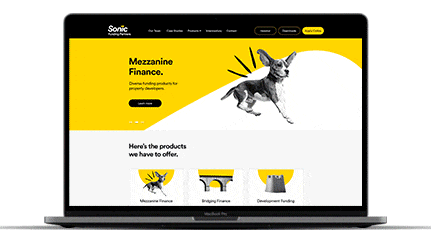Leading Tips for Producing an Impactful Web Site Design That Converts
In today's digital landscape, the importance of an impactful website style can not be overemphasized, particularly when it pertains to transforming visitors into clients. To achieve this, one have to consider a selection of factors, consisting of recognizing the target audience, prioritizing individual experience, and enhancing for mobile platforms. Furthermore, the calculated use of compelling call-to-actions and a distinct visual hierarchy plays an essential duty in assisting individuals with their journey. As we explore these vital components, it becomes apparent that the success of your website depends upon even more than just looks; it requires a thoughtful method to layout and functionality.

Understand Your Target Market
Understanding your target market is essential to efficient site layout, as it prepares for developing an interesting individual experience. Identifying that your users are, including their demographics, preferences, and actions, allows developers to tailor the internet site's content, design, and capability to fulfill particular demands.
Performing comprehensive marketing research is essential in this procedure. Surveys, meetings, and analytics can provide valuable insights into individual expectations and discomfort points. By assembling this data, designers can create customer identities that stand for various sections of the target market, making certain that style decisions are educated and appropriate.
Additionally, comprehending the target audience aids in picking proper layout elements such as shade schemes, typography, and imagery that reverberate with users. A website that speaks straight to its audience fosters a feeling of connection and count on, encouraging longer check outs and higher conversion rates.
Inevitably, a user-centered technique to site layout not only boosts individual satisfaction however likewise sustains company purposes by driving engagement and commitment. By prioritizing the demands and choices of the target audience, a website can properly serve its objective and achieve wanted outcomes.
Prioritize Customer Experience
To boost the general efficiency of a web site, prioritizing user experience (UX) is essential (Website Design). A properly designed UX makes certain that visitors can browse the site easily, discover information quickly, and engage with content meaningfully. This brings about raised individual fulfillment and higher conversion prices
Begin by applying instinctive navigating. Menus should be realistically structured, enabling customers to situate vital areas of the site with minimal effort. Uniformity in design aspects, such as color pattern and fonts, promotes experience, which is important for keeping customer engagement.
In addition, think about the packing rate of your website. A delay of simply a few seconds can bring about substantial drop-offs, as users are less most likely to wait on a slow-loading page. Streamlining images and enhancing code can enhance performance and maintain visitors.
Additionally, quality in content discussion is essential. Usage succinct, interesting language and damage up text with visuals to boost readability. By prioritizing individual experience, you not only produce a much more delightful atmosphere for visitors yet additionally enhance your brand name's integrity. Inevitably, a concentrate on UX is an investment in the lasting success of your website.
Maximize for Mobile Instruments
Maximizing for mobile devices is important in today's electronic landscape, where a boosting number of users gain access to internet sites through smartphones and tablet computers. A mobile-friendly design not only boosts individual experience yet also plays a substantial duty in enhancing online search engine positions. To accomplish this, it is necessary to adopt a responsive style that immediately gets used to various display sizes and positionings.

Filling rate is an additional crucial variable; mobile users are normally much less client and expect rapid accessibility to information. Maximize images and take advantage of internet browser caching to enhance efficiency. Examination your my company web site on multiple tools and screen resolutions to determine and correct any possible functionality concerns. By prioritizing mobile optimization, you guarantee that your website stays competitive and efficiently engages a more comprehensive audience.
Use Engaging Call-to-Actions
A site's performance frequently rests on its ability to guide visitors toward desired actions, making compelling call-to-actions (CTAs) check these guys out vital parts of design. CTAs work as the essential points that route individuals to engage with the website, whether that means buying, enrolling in a newsletter, or downloading a resource.
To produce effective CTAs, clearness is critical. Use concise language that clearly connects the activity you want the customer to take.
In addition, consider making use of directional hints, such as arrows or photos, to lead individuals toward these switches. By focusing on these components, services can significantly improve user interaction, driving conversions and inevitably accomplishing their web site's goals.
Concentrate On Visual Power Structure
Efficient website design relies heavily on a well-structured visual power structure that guides customers through content effortlessly. By arranging components in a fashion that prioritizes info, designers can improve user experience and assist in decision-making. This includes using size, shade, comparison, and spacing strategically to attract interest to one of the most critical parts of a webpage.
Making use of bigger typefaces for headings and subheadings establishes a clear distinction between different sections, permitting individuals to scan material effortlessly. Furthermore, using different shades for buttons and calls-to-action can catch customer interest and encourage interaction. Whitespace is another important part; it stops mess and enables customers to focus on vital messages without distractions.
Photos and graphics must enhance the text while additionally sticking to the well-known hierarchy, strengthening the total message (Website Design). Consistency in style components, such as color design and typography, additional strengthens the blog aesthetic power structure, making navigation user-friendly

Conclusion
In conclusion, effective web site style demands an extensive understanding of the target audience, prioritization of customer experience, and mobile optimization. Eventually, a well-executed site style offers as an important component in driving customer actions and achieving service goals.